The Wild Shrub at the Root of the Afghan Meth Epidemic
MUHAMMAD REHMAN SHIRZAD squints against the late afternoon sun as he scrambles up the side of a steep ravine in the district of Surobi on the eastern edge of Afghanistan’s Kabul Province
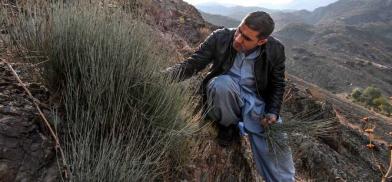
May 20, 2020 by Kern Hendricks
Muhammad Rehman Shirzad squints against the late afternoon sun as he scrambles up the side of a steep ravine in the district of Surobi on the eastern edge of Afghanistan's Kabul Province. This rugged gorge, only an hour’s drive from the national capital, is a far cry from the sprawling pink-and-red poppy fields that have long put Afghanistan at the heart of the global heroin trade. But these high, rocky outcroppings are home to a plant that may soon play as central a role in the country's drug economy as the infamous opium poppy.
Rehman, a forensic scientist with the Afghan government's Forensic Medicine Directorate, stops to catch his breath and scans the uneven ground ahead. He is searching for Ephedra sinica, a hardy, sage-colored shrub that grows abundantly across central and northern Afghanistan. The plant contains a naturally-occurring stimulant called ephedrine — the synthetic version of which is a common ingredient in decongestants and weight loss pills, and is often used to make crystal methamphetamine.
That characteristic has made ephedrine-containing medications tightly controlled in North America and Europe. Even in Afghanistan, which has no such restrictions, it is difficult for drug producers to obtain enough of the chemical for the large-scale production of crystal meth. For them, the ephedra plant has been a game-changer, providing a cheap, local, and naturally abundant source of ephedrine. In turn, Afghanistan’s cities — and even its impoverished rural areas — are seeing a flood of crystal meth use and addiction.
Early on, this development garnered little sustained attention, either from law enforcement or international drug experts. But in a 2019 report on Afghanistan’s crystal meth industry, a team led by David Mansfield, an independent consultant and former fellow at the London School of Economics who has studied Afghanistan’s narco-economy for more than 20 years, outlined the far-ranging effects of ephedra’s new role. “The conditions are right for this industry to become deep-rooted,” Mansfield said in a recent interview.
Exploiting the plant’s natural abundance in certain areas of the country and the absence of central government control, ephedra is harvested and shipped by truck to open-air markets that are now dedicated to supplying the surging demand, according to the LSE report. Although the effects of ephedra harvesting in Afghanistan are still difficult to gauge, Mansfield suggested that in terms of scale and value “it is quite possible for the ephedra and meth industry to equal that of the opium and heroin economy.” The opium and heroin trade in Afghanistan is worth as much as $6.6 billion per year, according to a 2018 report from the United Nations Office on Drugs and Crime (UNODC).
As he strides along the slope, Rehman points out that there are no small or freshly chopped ephedra shrubs here, suggesting they have not been harvested on any significant scale. “The plants here are much more difficult to reach than in other areas,” he says. “Even if local people need some ephedra for medical use, they are more likely to buy it from the bazaar.”
At those bazaars, ephedra merchants are doing a roaring trade.
In the heart of Kabul’s bustling Kochi Bazaar, 30-year-old Ali Mardan shuffles between rows of heavy burlap bags in his storefront. The bags overflow with herbs, spices, and natural remedies from every corner of Afghanistan and abroad. Mardan reaches into one and draws out a handful of small, dried ephedra branches, each one the size of a toothpick. The shrub, he says, is a mainstay of many local medicine cabinets, with customers brewing the dried branches into a tea to use for the treatment of maladies like kidney stones, congestion, urinary tract infections, and low blood pressure. “People buy it to cure a whole range of illnesses,” he says. “It’s very popular.”
Ephedra grows widely across Afghanistan’s central and northern latitudes, stretching from Farah Province in the west to Nangarhar Province on the eastern border with Pakistan. “Villagers in northern provinces harvest the plant, and trucks bring it to Kabul,” says Gijinder Singh, a local expert in natural medical remedies known as a “hakim.” He owns a small shop in Kabul and his father and grandfather before him have been buying ephedra for decades, though Singh claims he hasn’t heard about ephedra’s new use, a sign of just how isolated the knowledge of the ephedra-based meth industry is within Afghanistan, even among those selling the plant.
Some of that isolation can be attributed to how crystal meth is made. One of the drug’s appeals, at least to producers, is that, unlike heroin, it can be manufactured with limited resources and equipment. Aside from the key ingredient of ephedrine or a related chemical called pseudoephedrine, meth production only requires a handful of common chemicals, including red phosphorus and, often, iodine. With the requisite knowledge, a small meth lab can be built with nothing more than some simple kitchen glassware and a gas burner.
In the U.S., rolling meth labs in the backs of campers and vans have become a common method used by meth “cooks” to avoid law enforcement, and this clandestine approach seems to have been fully adopted by Afghan meth producers as well. Still, obtaining ephedrine or pseudoephedrine from store-bought medication is a slow and expensive process, and there isn’t enough in the country to support the growing drug trade. Afghanistan legally imports 100 pounds of pure ephedrine and 600 pounds of pseudoephedrine annually according to the UNODC, although a 2017 report noted that “it is possible that in addition to the government quotas, larger quantities are being brought into the country across uncontrolled border crossings.”
Unlike the U.S. and the European Union — both of which began regulating sales of ephedrine-containing medications in the mid-2000s due to their common use in the manufacture of crystal meth — Afghanistan has no laws governing the import or sale of such medications. But even with an unregulated supply, says Mansfield, the price of obtaining large amounts of ephedrine-containing medicine is still prohibitively high for Afghan meth producers, some of whom reportedly have suffered losses when using this method.
The potential for the ephedra plant’s use in crystal meth production in Afghanistan was recognized over a decade ago. In a 2008 report, the UNODC reported that synthetic drug production thrives “where precursors are available and unregulated, as is known to be the case in Afghanistan.” The report pointed out that there is an “ample supply of ephedra in central Asia,” providing abundant amounts of raw material that drug producers would find hard to resist.
How local producers learned to process the plant and isolate the ephedrine is harder to discern. According to Mansfield, both Iran and China are possible points of origin for the know-how. One possible theory, he says, is that Iranian meth producers passed their knowledge on to Afghan counterparts to skirt a crackdown on meth production in Iran in the mid-2010s, allowing these Iranian producers to maintain a steady supply of the drug. But following the genesis of the knowledge in Afghanistan is not easy. “At this point, only the cooks themselves know where the knowledge originally came from,” he says.
Regardless of how knowledge of the plant and its use made its way to Afghanistan, Mansfield says that it has significantly reduced the barriers to entry for making methamphetamine in the country, and ephedra has transformed local economies in the regions where it is grown and sold. After local villagers harvest the plant by hand in the rocky cliffs, truck drivers who would otherwise be likely earning less than $10 as day-laborers are paid up to $1,150 to transport loads of ephedra to various district centers, sometimes more than 100 miles away.
Once the ephedra lands in these district centers, often outside areas of Afghan government control, it is milled to a fine powder and sold in bulk quantities at open-air markets that have sprung up with the express purpose of providing supplies to local meth-producers. Mansfield notes the extent to which meth lab operators have become versed in the subtle art of ephedrine extraction. “As time has passed lab owners have become more discerning customers of 'oman'” — a local term for ephedra — “and their cooks have become better at processing it,” he says.
Cooks can now produce about 17 pounds of meth from 1,000 pounds of dried ephedra plant, says Mansfield, equating to a street value in Afghanistan of over $50,000. In nearby potential markets of the Middle East, this street value is orders of magnitude higher according to research conducted by the UNODC. Prices in the markets of Central Europe are lower due to the prevalence of methamphetamine manufacturers in the region, but even here street prices far outstrip those for the same drug sold within Afghanistan.
Once a meth lab owner has purchased the ephedra from the market, extracting the pure ephedrine is fairly straightforward. The whitish powder is soaked in large plastic drums filled with water, allowing the ephedrine to naturally separate from the plant fibers. The cooks then strain the green, gooey liquid multiple times to remove the remaining plant matter. The strained liquid is then evaporated, leaving behind the ephedrine solids as a powder. From here, the meth is cooked in the same way as it would be had the ephedrine come from any other source.
The sheer natural abundance of ephedra in Afghanistan appears to be allowing meth labs to increase production, while also lowering production costs. Mansfield says his team has recently uncovered evidence from satellite imagery of purpose-built soak ponds — large, concrete vats constructed adjacent to the main lab building — enabling producers to process larger quantities of ephedra at a time. These ponds take time and money to build and can’t be moved from place to place like small plastic drums, which Mansfield says may suggest a new permanence for the industry.
Another uncertainty is on the demand side. Thanks to a lack of research and data, the true scope of the meth problem in Afghanistan is hard to quantify, says Martin Raithelhuber, a synthetic drug expert with the UNODC. “There is a risk we severely underestimate a problem which has the potential to grow massively.” Despite the sparse data, Raithelhuber says that there are still plenty of signs that crystal meth is well established in the country — and rapidly spreading.
The first officially documented seizure of crystal meth in Afghanistan occurred in 2014, according to the UNODC, although Raithelhuber says that here, too, available data is likely misleading: “We can’t exclude the possibility that methamphetamine was seized even before 2014 but misclassified, as not every shipment seized was necessarily tested for in a laboratory.”
However the drug arrived, in recent years meth use has seen an explosion in popularity in Afghanistan in part thanks to the lowered production costs of using the ephedra plant. According to statistics gathered by Afghan government counter-narcotics forces, seizures of crystal meth increased dramatically from 2018 to 2019. The few drug rehabilitation facilities that exist in Kabul have seen surges in meth-related cases and the UNODC reports that many people who use now suffer from concurrent addictions to both heroin and meth.
Soaring unemployment rates may also be driving demand for the drug. A 2019 Gallup poll revealed that 30 percent of the Afghan workforce is unemployed, the highest rate ever recorded in the country. The experience of Gul Muhammad, 45, illustrates the common pattern for many Afghans who are out of work. Muhammad says he became addicted to meth after he migrated to Iran to work as a day laborer. Crystal meth allowed him to work longer hours in a physically demanding construction job, with seemingly little strain. “I was using heroin for about three years before my friends introduced me to ‘sheesha’ in Iran,” he says using a local term for meth. “It makes everything difficult seem easy. You can work from early morning to late at night and not even realize that the day has passed. The hours seem to disappear.”
While ephedra harvests and meth processing often occur far from Kabul, urban centers are where the destructive effects are most evident. In response, some locals are trying to build support networks. One example is Abdur Raheem Rejaey, the director of Bridge, a small Afghan nonprofit that provides free medical care, clean needles, and psychological support for people with addiction to drugs living on the streets of Kabul. Raheem used to use drugs himself. Like many others, he first became addicted during his time as a day laborer in Iran, and he has seen firsthand the effects that meth can have, not just on the body but on the mind.
“Many people who use meth end up with psychological problems,” he says. According to a recent UNODC report on current treatment methods for those suffering from long-term stimulant use, methamphetamine use can have a raft of “medical, psychiatric, neurologic, and neurocognitive effects” including sleeplessness, hyper-aggression, and severe weight loss. To Raheem, the addictive and destructive effects of these drugs are clear. “Up until now,” he said, “I’ve never seen someone completely beat their meth addiction.”
When crystal meth was first sold on the streets of Kabul, Raheem adds, dealers advertised it as a healthy alternative to heroin — something that would help people break their addiction to opiates. By the time many began to realize the devastating physical and psychological effects of this new drug, it was already too late.
Raheem’s efforts to support those with addiction to drugs are rare in Afghanistan. Drug abuse is highly stigmatized, and the number of local and government organizations offering help and treatment is limited. There are only five drug treatment centers in Kabul, and, Raheem says, targeted treatment for crystal meth addiction is nonexistent.
The widespread appeal of the drug may be due, in part, to stress from the ongoing war in the country. According to the United Nations Assistance Mission in Afghanistan (UNAMA), 3,403 civilians were killed and 6,989 injured in the conflict in 2019, the sixth straight year that civilian casualties surpassed 10,000. “This environment creates significant psychological pressure on those involved and drives many to seek a means of escape,” says Rohullah Amin, a psychologist in Kabul and former director of the American Institute for Afghanistan Studies, a nonprofit scholarly institute.
Other factors are also at play. Amin says that a widespread lack of mental health support for Afghans leads many in difficult situations to become even more susceptible to drug addiction. “There are very few mental health services available in Afghanistan, and very few professionals with the training to properly diagnose and treat mental health issues, particularly in regards to emergency responses,” he says. “As a result of a lack of proper treatment, many people suffering from mental health issues in Afghanistan self-medicate, and this can also lead to addiction.”
Until recently, government and law enforcement efforts to curb the sales of illicit drugs had been limited. According to the UNODC’s 2017 Afghanistan Synthetic Drugs Situation Assessment, “overall, the issue of methamphetamine trafficking has hardly been present in the national drug discussion.”
Still, there have been hints of change. Afghanistan’s Ministry of Interior Affairs updated the country’s drug laws in 2016, significantly lowering the quantity of drugs a person must be caught with before they can be prosecuted. According to Khalid Mowahid, a spokesman for the Counter Narcotics Justice Center, an Afghan government body in charge of prosecuting large drug cases within Afghanistan, the move indicates an admission by law enforcement that previous laws were out of touch with the severity of the synthetic drug problem in Afghanistan.
American forces have also ratcheted up the pressure on illicit drug producers in Afghanistan. On May 6, 2019, U.S. forces conducted 68 airstrikes in one day against Afghan drug labs, most of which produced crystal meth. American forces have also started to use the large, telltale ephedra soak ponds to help identify labs for strikes. But despite the destruction of numerous labs and the associated casualties — at least 60 civilians may have been killed in the airstrikes according to UNAMA investigators, a finding disputed by the U.S. military — authorities reported seizing more than 200,000 pounds of meth in March of this year, indicating that this aggressive approach has not significantly slowed production.
There are some indications that the Afghan government is starting to acknowledge the increasing significance of the ephedra plant to the domestic meth industry. In October 2019, the Afghan ministers for health and counter-narcotics submitted a bill to the National Assembly proposing a nationwide ban on the harvest and use of ephedra. The bill is yet to be approved, but it represents one of the first public acknowledgments by the Afghan government of ephedra’s role in this public health issue. An official at the health ministry did not respond to questions regarding a timeframe for implementation of the bill.
Back in Surobi, Rehman, the Afghan government scientist, scrambles back down the slope to his car, a large bunch of ephedra branches in hand. He will take them back to his lab to test how potent the ephedra in the region is; the higher the ephedrine content, the more alluring the plant is for drug manufacturers. “There are a number of different types of ephedra growing in Afghanistan,” he says. “But there are very few places where we have the equipment to conduct these sorts of tests.
For now, the only ephedra harvesting done here is by the odd local looking for small amounts to use as kindling or medicine, says Rehman. Because of the rugged terrain, large scale harvest for drug manufacture is not currently practical, but as ephedra’s value to local drug producers continues to climb, harvesters will begin looking further afield for sources of the plant. “This plant’s use is something that people in Afghanistan are only recently becoming aware of,” says Rehman. “It will take time to understand its true importance.”
But, he adds, “this is clearly an issue that needs to be addressed as soon as possible. We already face so many issues in Afghanistan. The creation of cheaper, more destructive drugs is not something we should allow to be added to that pile.”
This article was originally published on Undark. Read the original article.



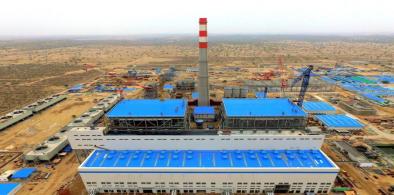
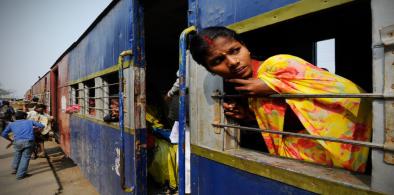

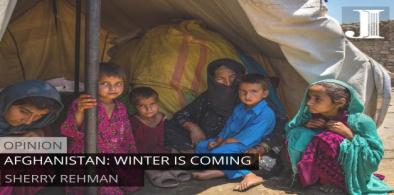



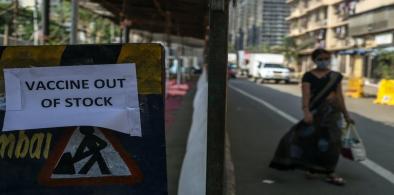
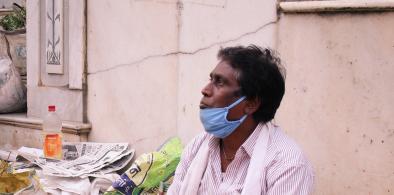
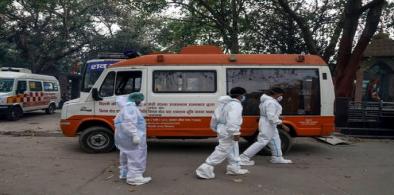






Post a Comment